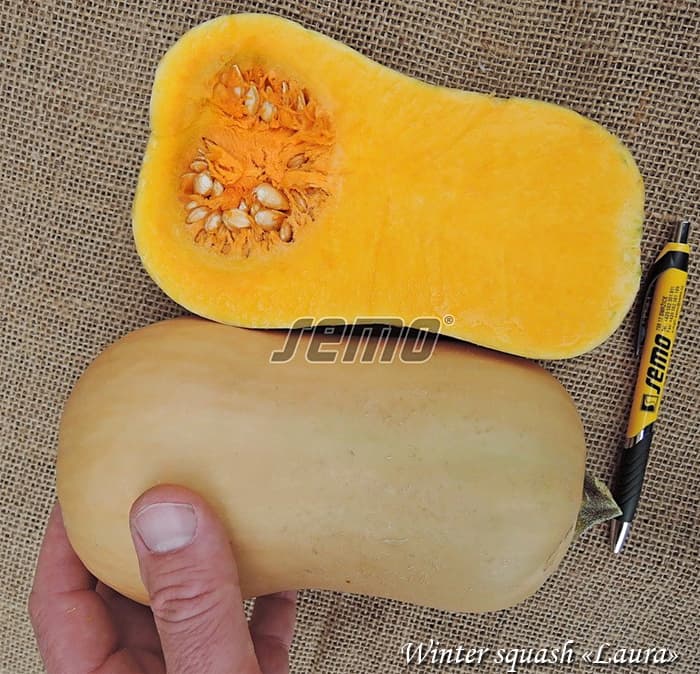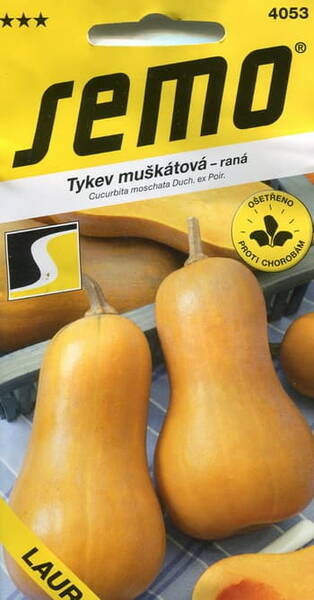Ex Tax: 1.85€
The rich nutty-flavoured, orange flesh stays firm when cooked. Nothing beats the rich, sweet flavour of winter squash.

Musque winter squash.
One of the best butternut squashes in the world, with an excellent nutty flavour, sweet, with dense, oily, orange flesh and the ability to be stored all winter on the floor in the hallway.
"Butternuts" appeared in Europe relatively recently and even in the UK are still considered a novelty, which cannot be said about Argentina, from where the fruits of these pumpkins are exported all over the world.
Butternut squash plants grow strong and long-vineed. The number of fruits weighing from 500 g to 1 kg can be quite large - up to 30 pumpkins from one plant. However, it is necessary to pick the fruits in a timely manner, since when the seeds ripen in them, the growth of the rest is delayed. Unripe greenish pumpkins will ripen later when lying on the floor and acquire a characteristic beige colour (one-day fruits in milky ripeness cannot be picked for ripening, because they will not be able to ripen). Of course, these pumpkins should be grown in our conditions through seedlings: the seeds are planted in containers in the first ten days of May. To germinate the seeds until the shoots appear, it is necessary to provide warmth and keep the pots in a greenhouse on solar heating, or under a lamp or next to a heating battery (since in cold soil the seeds rot from the inside).
Soaking the seeds is not at all necessary. The seedlings are planted in the ground when the threat of frost has finally passed.
Some farmers confuse butternut pumpkin with zucchini because of its small size, but when cut, it does not look like a zucchini at all. Butternut is a pumpkin with a thick, straight "neck" and a "light bulb" at the end, and inside this "light bulb" there is a small container with seeds. The rest of the "body" of the fruit is filled with tender orange pulp (by the way, thanks to its orange color, butternut pumpkin is a rich source of antioxidants). It is easy to guess that there is an unimaginable variety of recipes for cooking dishes from this pumpkin for vegetable, meat, cereal, pasta dishes, soups, purees, sauces. It is widely used for stuffing. Puddings, cakes, pastries, candied fruits are made from delicate fruits. Finally, it is fried and simply boiled.












